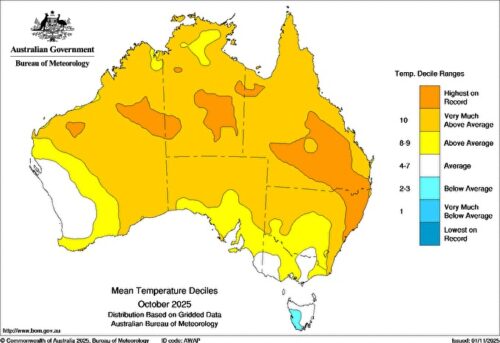Melbourne has just had its coldest six-day period in May for 42 years, with more cold weather to come.
- For six days straight between last Tuesday and Sunday, Melbourne’s maximum failed to exceed 15°C. That hasn’t happened since May 1981.
- The warmest day of the chilly six-day run was Saturday with a max of exactly 15°C while the coolest days were Tuesday and Thursday which both had tops of 13.7°C.
As any Melburnian knows, these are not particularly cold maximum temperatures this close to winter. Indeed, Melbourne’s average May maximum is 16.7°C, so we’re only talking about days which were two or three degrees below average.

Image: Weekly maximum temperature anomaly
But to have a run of cold days lasting almost a week is definitely unusual and can be attributed to a series of Southern Ocean cold fronts which have swept over Victoria. Another front is due Thursday, and this one might be the strongest of the lot. Thursday is expected to be a wet one in Melbourne with a top of 15°C, and showers will persist with a biting wind on Friday that makes the top of 13°C seem considerably colder.
There’s a slight warming trend on the cards for the early part of next week, but we’re only talking maximums of 17°C or so. That means that Melbourne’s average maximum for May 2023 could end up being slightly cooler than the historical average – a very rare statistic these days.
- As things stand now, Melbourne’s running average max temp for May 2023 is 16.4°C.
- That’s 0.3°C lower than the long-term average of 16.7°C.
We’ll have a full wrap of Melbourne’s May weather at the end of the month, so stay tuned.
To find out more about DTN APAC and our forecasting services, please visit our website or email us at apac.sales@dtn.com.






